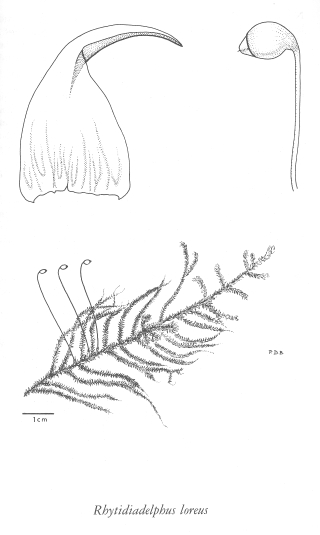E-Flora BC: Electronic Atlas of the Flora of British Columbia
Rhytidiadelphus loreus (Hedw.) Warnst.
lanky moss (loreus goose neck moss) Hylocomiaceae Species Account Author: Wilf Schofield Extracted from Some Common Mosses of British Columbia Introduction to the Bryophytes of BC
|
|||||||||||||
